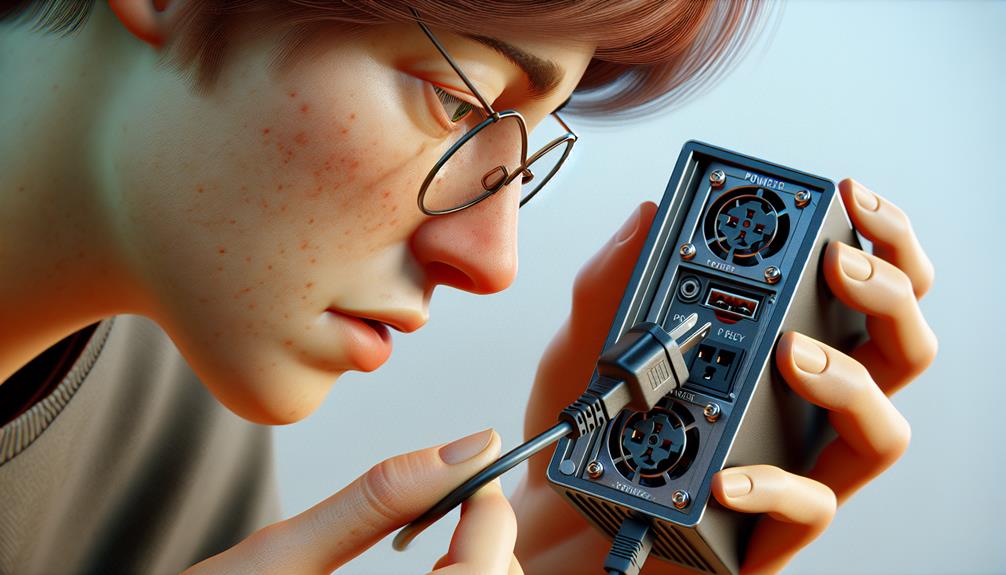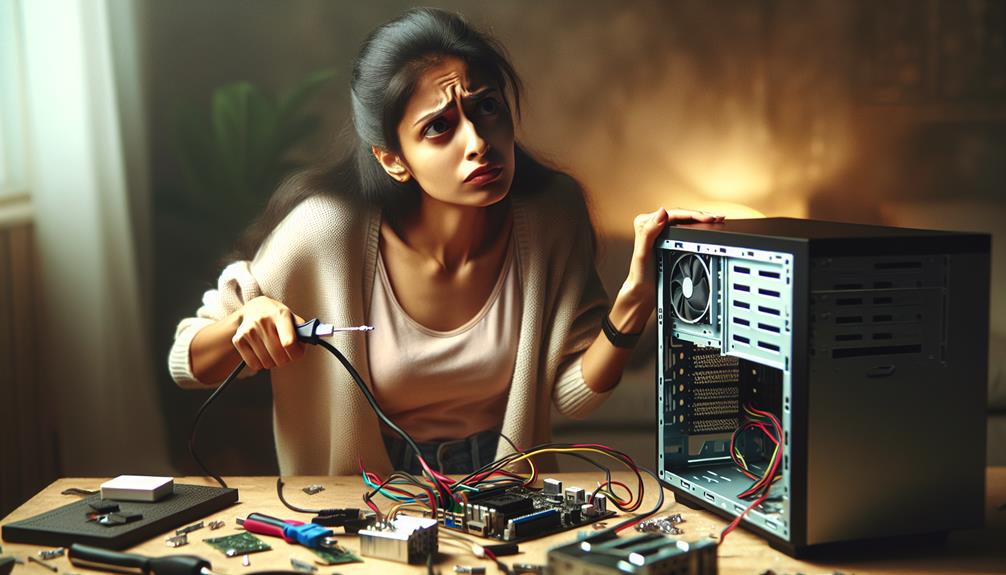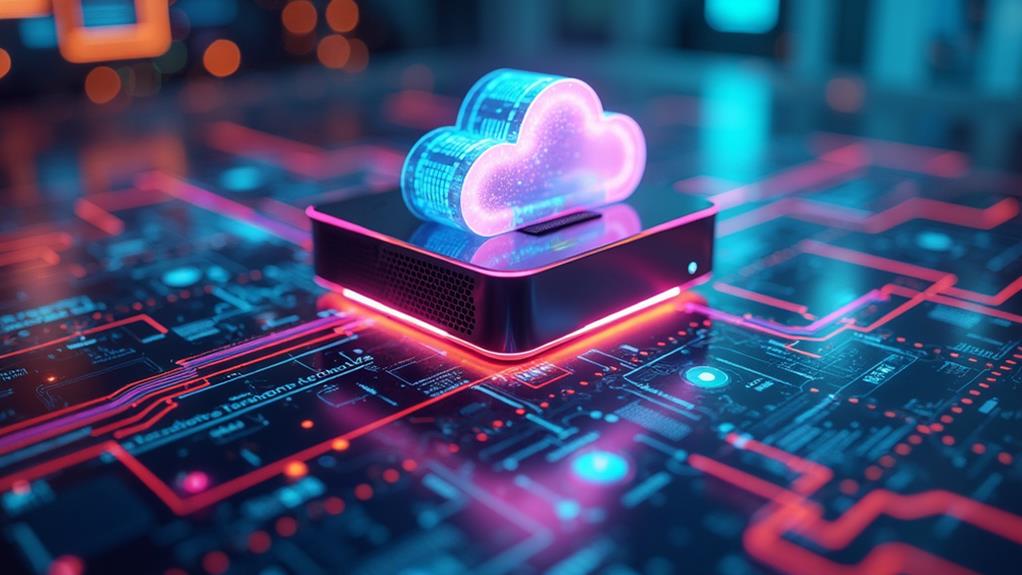



Inspect components for damage. Connect cables securely. Place mini PC on stable surface. Follow software instructions. Confirm peripheral compatibility. Plug in keyboard, mouse, and monitor. Update drivers. Power up by pressing button. Manage BIOS settings. Customize for performance. Install essential software. Set up network. Troubleshoot connectivity. Regularly update software. Optimize settings for stability. For a detailed guide on mini PC setup, follow these steps closely.
Key Takeaways
- Inspect components for damage or missing parts before connecting cables.
- Connect peripherals like keyboard, mouse, and monitor securely.
- Power up the mini PC, customize BIOS settings, and manage cables.
- Configure settings for performance optimization and install essential software.
- Troubleshoot network connectivity, update software, and contact ISP if needed.
Unboxing and Inspection
Upon opening the package, carefully examine the mini PC components for any signs of damage or missing parts. Setting up hardware for your mini PC involves connecting the necessary cables, such as power and HDMI, to the appropriate ports on the device. It is vital to make sure that all connections are secure to avoid any potential issues during the setup process. Additionally, make sure to place the mini PC on a stable surface with proper ventilation to prevent overheating.
When it comes to software installation, follow the manufacturer's instructions provided in the user manual or on their website. Usually, this involves inserting a USB drive or CD with the operating system into the designated slot on the mini PC. You will then need to power on the device and follow the on-screen prompts to complete the installation process. It is essential to pay attention to each step to ensure a successful setup of the software. By carefully setting up the hardware and following the software installation instructions, you will be one step closer to enjoying your new mini PC.
Connecting Peripherals
To set up your mini PC effectively, begin by connecting the necessary peripherals to enhance its functionality and usability. When connecting peripherals, it is important to confirm compatibility to avoid any issues. Start by plugging in your keyboard, mouse, and monitor into the respective ports on the mini PC. Check for any specific drivers that may need to be installed for these peripherals to work correctly.
Next, consider cable management to keep your setup neat and organized. Use cable ties or clips to secure cables and prevent tangling, which can improve airflow and overall aesthetics of your workspace. Additionally, make sure to update the drivers for your peripherals to ensure peak performance.
After connecting all peripherals, check for any software updates for both the mini PC and the connected devices. Keeping your software up to date can enhance security, fix bugs, and improve overall system performance. By following these steps, you can set up your mini PC with all peripherals properly connected and ready to use.
Powering Up the Mini PC

You can power up the mini PC by pressing the power button located on the front or top panel of the device. Once you press the power button, the startup process begins. The BIOS settings, which control basic functions like boot order and system time, are initiated during this stage. It's important to make certain that the power supply is connected securely and that the cable management is neat to prevent any issues with power delivery.
Before powering up the mini PC, make sure all necessary peripherals are connected, such as the monitor, keyboard, and mouse. Once everything is set up, press the power button and observe the startup sequence. The BIOS settings will determine how the mini PC boots up, so it's essential to familiarize yourself with these settings for any future adjustments.
Proper cable management not only ensures a clean setup but also helps with airflow and prevents potential hazards. Understanding the startup process and BIOS settings will allow you to customize your mini PC to suit your needs effectively.
Initial Setup and Configuration
After powering up the mini PC and confirming proper peripheral connections, the initial setup and configuration process involves customizing settings to optimize the performance of your device. Begin by installing essential software and performing system updates to make sure your mini PC is equipped with the latest features and security patches. Navigate to the settings menu to personalize preferences such as display resolution, power settings, and privacy options to suit your needs.
Next, proceed with the network setup to establish wireless connections. Access the network settings to scan for available Wi-Fi networks and input the credentials for the desired network. Guarantee a stable connection by placing the mini PC within range of the wireless router and eliminating potential sources of interference.
Troubleshooting and Tips

For effective troubleshooting and optimizing performance on your mini PC, consider checking for software updates regularly. Keeping your software up to date guarantees that you have the latest features, security patches, and bug fixes. Additionally, make sure to install necessary software and update drivers for seamless functionality. Proper software installation and driver updates can resolve compatibility issues and enhance overall system performance.
When troubleshooting network connectivity or setting up the internet on your mini PC, start by checking your network cables and router settings. Confirm that the cables are securely connected and that your router is configured properly. If you are using a wireless connection, verify that your Wi-Fi is working correctly and that you have entered the correct network password. Restarting your router and modem can also help resolve connectivity issues.
In cases of persistent problems, consider contacting your internet service provider for assistance. By following these troubleshooting tips, you can ensure a smooth and efficient experience with your mini PC.
Disclosure: As an Amazon Associate, I earn from qualifying purchases.




